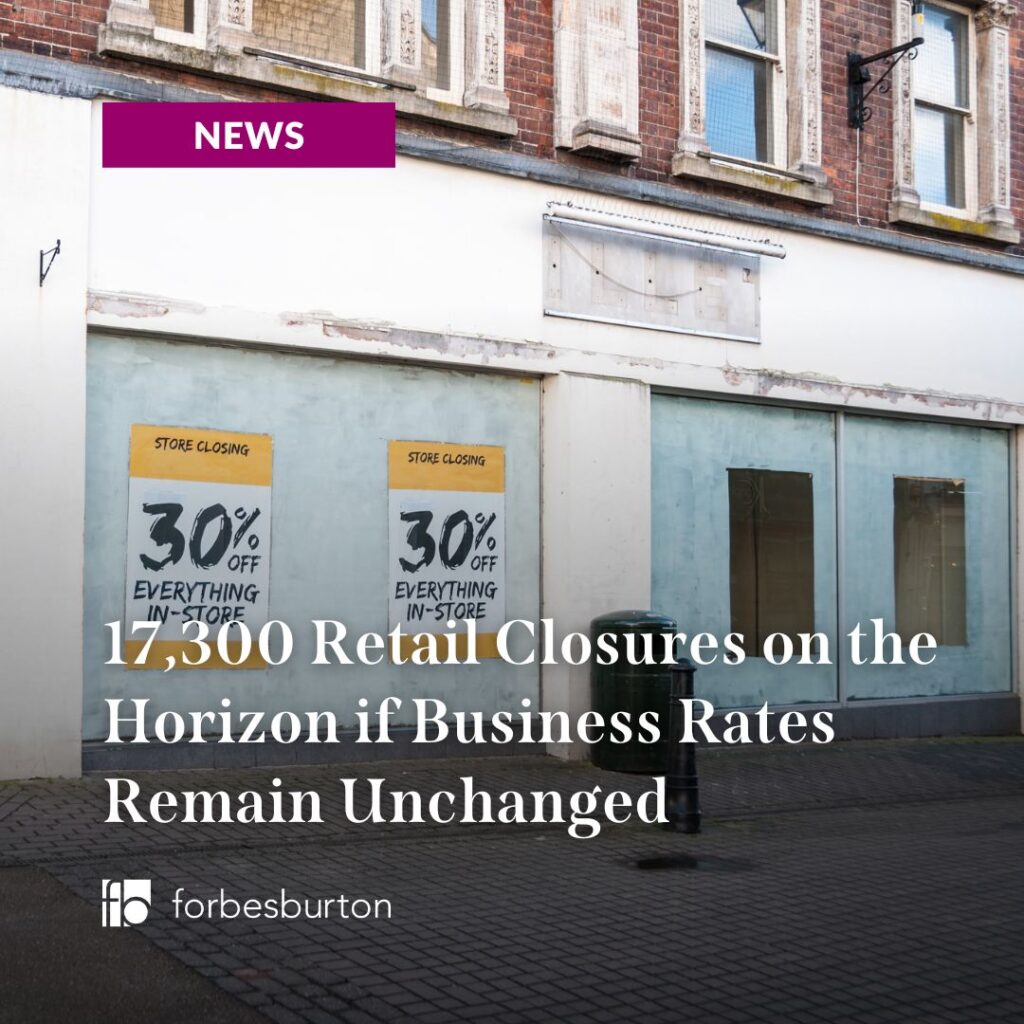
A recent report published by Development Economics has warned that sticking with the current business rates system could close 17,300 retail units over the next decade. As it stands, the previous government’s plans to discontinue the standard multiplier freeze will come into force in Spring 2025, creating widespread financial issues for thousands of retailers.
Among the businesses concerned about the scheduled increase is Sainsbury’s. The supermarket giant has teamed up with Usdaw, a retail trade union, to call for a 20% reduction in rates and a suspension of the planned increase. Chief Executive of Sainsbury’s, Simon Roberts complains that “the current business rates system has become an enormous burden on [the retail] industry”, adding that “it is no longer fit for purpose”.
This plea for a 20% reduction has been prompted by the findings of the report from development Economics. It claims that such a cut to the headline rate would save an estimated £1bn in costs for retailers in just the first year, safeguarding over 17,000 jobs. Interestingly, it also suggests that this move could actually generate income in the long term for the Exchequer.
Although the report concedes that a 20% cut would prove expensive for the government for the first couple of years, it would begin to generate around £70m per year after a decade. Perhaps sensing some hesitancy to adopt such a large cut, the report also evaluates the changes that smaller reductions would make too. Their scenario modelling shows that even a reduction of 1% has the potential to protect 610 jobs and save retailers £69m in the first year alone.
A disadvantage for the high street
When it comes to the scrapping of the multiplier freeze, the report lays out the damage this scheduled change could do. The 2023 autumn budget announcement saw the small business multiplier remaining at 49.9p, and the standard multiplier jumping from 51.2p to 54.6p. Using these figures as the framework to base their figures on, they found that the raising of the standard multiplier could cost retail companies between £317m and £435m over the course of the first year. On top of this, somewhere between 2,813 and 4,384 jobs would be put at risk over the same period.
Despite the standard multiplier being used for larger businesses rather than SMEs, smaller firms may well find themselves indirectly affected. As the research states, large retailers increase footfall “as anchor businesses for smaller retailers”. The report goes on to add that the presence of such businesses can “generate up to 27% of customer footfall for other customer-focused businesses in town centres”. Should these ‘anchor businesses’ disappear from our high streets, our SMEs will no doubt suffer as a result.
The new Labour government did pledge in its election manifesto that it would change the business rates scheme. It mentioned that “the current business rates system disincentivises investment, creates uncertainty and places an undue burden on our high streets. In England, Labour will replace the business rates system, so we can raise the same revenue but in a fairer way. This new system will level the playing field between the high street and online giants”.
This levelling cannot come too soon for retailers with ‘bricks and mortar’ businesses. Already suffering at the hands of online retailers that can provide low prices and quick delivery, the high street can ill afford to absorb additional costs that their competitors elude.
Is your retail business looking over its shoulder?
Once one HMRC bill or loan repayment is missed, the snowball effect can quickly overcome even the strongest companies. If you’re concerned that your retail business might struggle to pay an upcoming bill, then you should get in touch with us as soon as possible.
We’ve helped thousands of businesses just like yours to navigate tricky situations, and set foot on the road to recovery. Call us on 0800 975 0380, or email advice@forbesburton.com for a free consultation.

Ben Westoby
ben.westoby@forbesburton.com
Related Articles
We're here for you.
As a dedicated team of Advisers and Consultants our aim is to help you fix the issues and solve the problems within your business.
Find out more →

